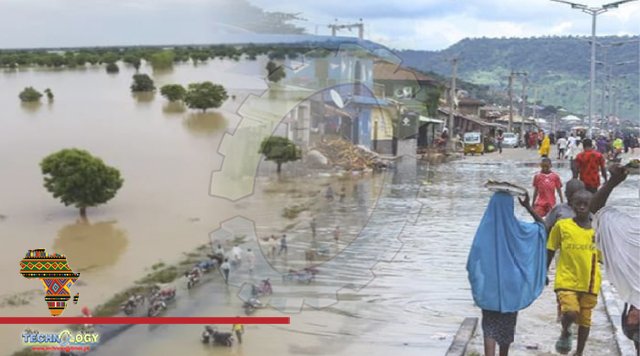Nigeria Flooding, Widespread flooding caused by extreme rainfall and the release of excess water from a dam in neighboring Cameroon has left 1.4 million Nigerians displaced and claimed 500 lives, according to government officials.

The floods also injured 1,546 people, inundated 70,566 hectares of farmland and “totally damaged” 45,249 homes, said Nasir Sani-Gwarzo, the permanent secretary in Nigeria’s Ministry of Humanitarian Affairs, Disaster Management and Social Development. Flooding has affected 27 of Nigeria’s 36 states, officials said. Satellite imagery from Landsat 9 showed major swelling of the Niger and Benue rivers in southern Nigeria, where, according to the U.S. space agency NASA, floodwaters “inundated numerous communities.” Where the rivers converged, the imagery revealed floodwaters overwhelming Lokoja, the capital of Kogi state. Last week, 76 people drowned in Anambra when their boat capsized as they tried to escape high floodwaters, according to multiple news organizations. Floodwater had risen as high as rooftops in Kogi and Anambra, CNN reported. More than 600,000 people in Anambra have been displaced by flooding. Nigeria Flooding,, “It’s saddening. All of a sudden, people are left with no homes and turned to beggars in weeks. No matter how rich they were, the displacement has reduced them so much,” Chiamaka Ibeanu, a registered nurse who lives in Onitsha in Anambra state, told The Washington Post. Ibeanu’s immediate family lives in Ossomari and Atani, nearby areas of Anambra close to the Niger River. She received word that her aunt and uncle had been displaced when their home was submerged. “The items she [her aunt] couldn’t pack are in water … and she doesn’t have any other home,” Ibeanu said. “If not for the accommodation at the Primary Healthcare Center, she would have been stranded.” Since the beginning of Nigeria’s rainy season,
which lasts from April to October, the Nigerian Meteorological Agency (NiMet) and the Nigerian Hydrological Services Agency (NIHSA), said that flooding was imminent and that parts of the country would experience heavier rainfall compounded by water flowing from Lagdo Dam in Cameroon. The agencies predicted that the volume of water across Nigeria would increase. “Communities must recognize that all disasters are local and they must take climate predictions and flood outlook warnings seriously,” said Alhaji Ali Grema, Nigeria Flooding,, Nigeria’s director of humanitarian affairs. Sani-Gwarzo, the government permanent secretary, said the scale of this year’s flooding is similar to the last major flooding Nigeria experienced, in 2012, which displaced 1.3 million people and claimed the lives of 431. In 2012, 30 of the 36 states were affected. “The scale of devastation can only be compared to the 2012 floods,” said Sadiya Umar, the minister of humanitarian affairs, in a statement. The submergence of farmlands has sparked fears of increased food insecurity and higher prices. “Their farmlands are covered in the flood. This means that what was planted is swept away, and there might be food scarcity next year,” Ibeanu said. The humanitarian affairs ministry said the federal government has committed to providing relief to all communities. “We are taking all the necessary actions to bring relief to the people affected by the flood. All relevant agencies have renewed their commitment to strengthen their efforts in reaching out to the victims and bringing relief to them,” Sani-Gwarzo said. On Friday, the humanitarian affairs ministry announced that the Nigerian government had begun to distribute 12,000 metric tons of food and nonfood items to states devastated by the flooding.
Source: This news is originally published by washingtonpost